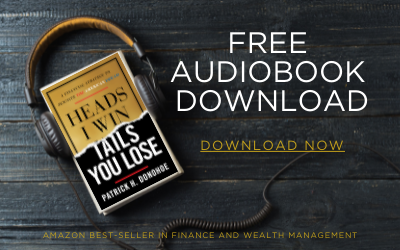For many, active retirement is no longer about stepping away from work entirely—it’s about having the financial freedom to pursue meaningful activities without worrying about income. Whether that means consulting, mentoring, launching a business, or dedicating time to passions and philanthropy, the key is having a strategic financial foundation that makes work optional.
An active retirement lifestyle means:
- Freedom from financial stress—knowing your cash flow is secure.
- The ability to work or invest on your terms—not because you need to, but because you want to.
- A life structured around impact, purpose, and fulfillment—not just financial survival.
To achieve this, you need a financial strategy that guarantees:
- Reliable Cash Flow – Income certainty without relying on market performance.
- Liquidity & Flexibility – Access to funds without penalties or restrictions.
- Legacy & Protection – A structure that ensures generational wealth transfer.
With the right strategy, your active retirement is built on financial certainty, not market speculation.
Financial Independence: The Foundation of an Active Retirement

For many, active retirement is not about stepping away from work completely, but about having the freedom to choose how and where to spend their time. Whether it’s pursuing passion projects, starting a business, volunteering, or consulting in a meaningful way, the key to an enjoyable and stress-free active retirement is financial independence.
However, true financial independence doesn’t come from simply saving a large nest egg. It requires a structured strategy that guarantees cash flow, protects against market downturns, and provides flexibility to make financial decisions on your own terms.
A properly structured wealth plan ensures that you:
- Never have to work for money unless you want to.
- Have access to liquid, tax-efficient assets that create ongoing income.
- Can sustain your lifestyle without relying on market-based investments.
- Leave a financial legacy that benefits future generations.
Achieving this level of financial independence requires three key financial principles:
1. Cash Flow First: Building a Reliable, Predictable Income Stream
Many conventional financial strategies focus on accumulating assets and then withdrawing from them in retirement, often at a set rate like 4% per year. However, this approach creates uncertainty, as the success of the strategy depends on market conditions, tax rates, and how long you live. If the market declines or you need more income than expected, you risk running out of money.
A cash flow-first approach flips this model on its head. Instead of relying on accumulated assets, it focuses on creating a steady, reliable income stream that does not fluctuate with the market.
- Whole life insurance provides guaranteed cash value growth, which can be accessed at any time through tax-advantaged policy loans.
- Properly structured annuities can create a reliable income stream for life.
- Alternative investment strategies, such as real estate, private lending, and structured business income, can supplement cash flow without relying on the stock market.
What this means for you: Financial independence in active retirement is not about “how much you have,” but about “how much consistent income you generate.”
2. Protection Against Market Volatility: Stability in All Economic Conditions
A common mistake in conventional financial planning is assuming that your assets will continue to grow predictably over time. In reality, market downturns can significantly impact your portfolio, particularly when you begin withdrawing funds.
The problem with relying on stocks, mutual funds, or traditional retirement accounts is that their value is dependent on market conditions. If you withdraw funds during a downturn, you are selling assets at a loss, which accelerates portfolio depletion and reduces long-term sustainability.
Instead of exposing your wealth to unnecessary risk, a properly structured active retirement plan should include:
- The Volatility Buffer Strategy – Using whole life insurance cash value as a financial buffer to avoid withdrawing from market-based accounts during downturns.
- Diversified income streams – Generating income from a variety of low-risk, cash-flowing assets that are not tied to the stock market.
- Tax-advantaged liquidity – Ensuring that your money is accessible without unnecessary penalties or tax burdens, unlike 401(k)s and IRAs.
What this means for you: An active retirement should be financially stable regardless of what happens in the economy. By protecting your wealth from market volatility, you maintain control over your income, lifestyle, and future.
3. Flexibility and Legacy: Controlling Your Wealth While Creating Generational Impact
One of the biggest advantages of financial independence is the ability to make financial decisions on your own terms, rather than being forced into choices dictated by external factors like taxes, regulations, or the stock market.
An active retirement should provide:
- The flexibility to work, invest, or travel on your own schedule—not one dictated by financial necessity.
- Access to capital when you need it, without penalties or government-imposed restrictions.
- The ability to pass on wealth to future generations, structured in a way that maximizes tax efficiency and impact.
A well-designed financial strategy ensures that:
- Your money is always accessible – Whether you need funds for an investment opportunity, a family emergency, or a new business venture, your wealth strategy should provide liquidity without restrictions.
- You can fund generational wealth – The Family Bank Strategy, which uses whole life insurance as a central financial hub, allows you to create a self-sustaining pool of capital that can benefit your children and grandchildren.
- Your assets are shielded from unnecessary taxation – Many people unintentionally lose large portions of their wealth to taxes, probate, and poor financial planning. Proper structuring ensures that your wealth is preserved, protected, and passed on efficiently.
What this means for you: Active retirement is not just about enjoying financial independence today—it’s about creating a financial structure that benefits future generations while allowing you to live life on your terms.
Whole Life Insurance: The Cornerstone of an Active Retirement Strategy

Many people believe that financial security in retirement means relying on 401(k)s, IRAs, or stock portfolios, but these assets are subject to market volatility, tax liabilities, and withdrawal restrictions. Instead, whole life insurance provides a stable, tax-efficient foundation for an active retirement:
- Guaranteed cash value growth – Unlike stocks, your wealth compounds safely.
- Tax-free liquidity – Access funds without penalties, at any time.
- Protection from market Risk – Ensure your income is stable in all economic conditions.
- A Permanent legacy asset – Unlike traditional investments, whole life policies transfer wealth tax-free.
What this means for you: An active retirement should be built on financial certainty, not uncertainty.
The Volatility Buffer Strategy: Protecting Your Active Retirement from Market Risk

Many people in active retirement withdraw from 401(k)s or investments, but this exposes them to sequence of returns risk—the danger of withdrawing during a market downturn, which can permanently deplete assets.
Instead of relying on market-based investments, the Volatility Buffer Strategy allows individuals to use the cash value of their whole life insurance policy during downturns. This means:
- You avoid selling assets at a loss when the market is down.
- Your portfolio has time to recover and continue compounding.
- Your long-term wealth is protected, reducing the risk of running out of money.
What this means for you: Your active retirement stays stable, even in uncertain markets.
Work as a Choice, Not a Necessity in Active Retirement

For many individuals, active retirement does not mean stepping away from work entirely—it means having the financial freedom to choose work that is fulfilling, meaningful, and aligned with personal passions. The difference between working by necessity and working by choice is financial independence—having a structured wealth strategy that removes the stress of needing to earn an income.
When financial stability is secure, work shifts from being an obligation to a source of purpose, impact, and enjoyment. Whether it’s consulting, mentoring, launching a business, or dedicating time to philanthropy, work in active retirement should be an extension of personal values, not a financial survival strategy.
The Freedom to Work on Your Terms
Financial certainty allows you to decide:
- What type of work you want to do.
- How many hours you want to work.
- Who you want to work with.
- Whether you want to be compensated or simply contribute their skills.
This level of financial autonomy is achieved by structuring wealth in a way that ensures consistent cash flow, liquidity, and asset protection—eliminating the pressure of having to generate an income.
Take Control of Your Active Retirement Today
Instead of asking, “How can I work longer to maintain financial security?”, the better question is:
“How can I structure my wealth so that work is always optional?”
At Paradigm Life, we specialize in strategies that provide cash flow, protection, and lasting wealth certainty. Whether you want to create passive income, safeguard your financial legacy, or ensure lifetime financial independence, the right strategy makes all the difference.
Schedule a complimentary consultation with a Paradigm Life Wealth Strategist today to learn how to build a wealth strategy that guarantees financial freedom—so you can work because you want to, not because you have to.







